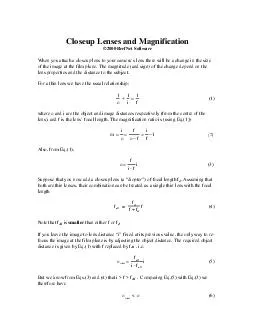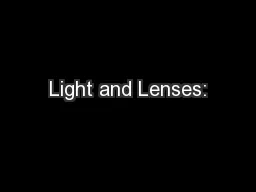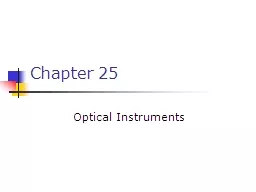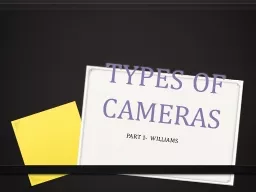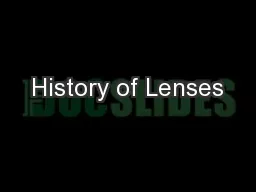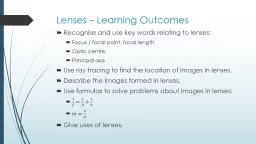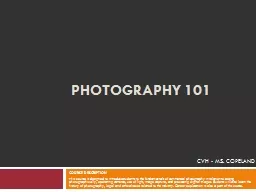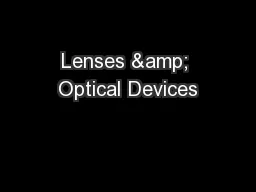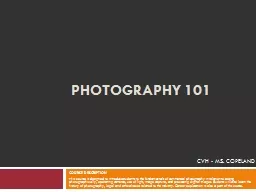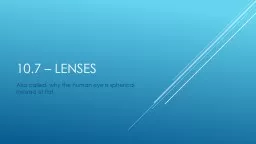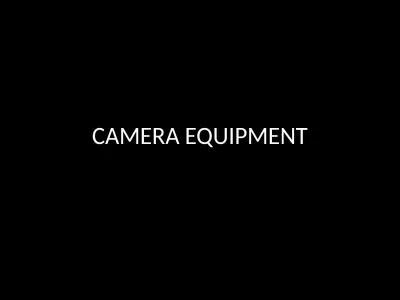PDF-Closeup Lenses and Magnification ReefNet Software When you attach a closeup lens to your
Author : tawny-fly | Published Date : 2015-03-06
The magnitude and sign of the change depend on the lens properties and the distance to the subject For a thin lens we have the usual relationship 1 where o and i
Presentation Embed Code
Download Presentation
Download Presentation The PPT/PDF document "Closeup Lenses and Magnification ReefNe..." is the property of its rightful owner. Permission is granted to download and print the materials on this website for personal, non-commercial use only, and to display it on your personal computer provided you do not modify the materials and that you retain all copyright notices contained in the materials. By downloading content from our website, you accept the terms of this agreement.
Closeup Lenses and Magnification ReefNet Software When you attach a closeup lens to your: Transcript
Download Rules Of Document
"Closeup Lenses and Magnification ReefNet Software When you attach a closeup lens to your"The content belongs to its owner. You may download and print it for personal use, without modification, and keep all copyright notices. By downloading, you agree to these terms.
Related Documents

